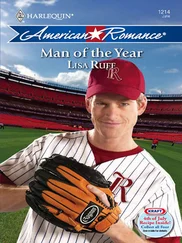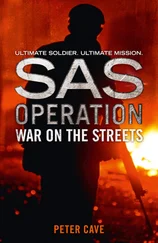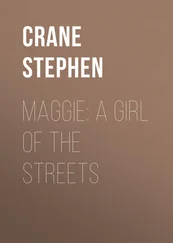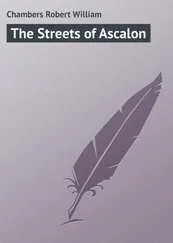“Thank you,” I said. I couldn’t look at her, but just went to the elevator, pressed the button, and stood there willing the doors to open. I walked straight out through the lobby, and caught a taxi to the Nika Hotel, outside the city center.
There was only one room left at the Nika, and it was huge, comfortable, and—incredibly—spotless. I couldn’t believe how stupid I’d been not to check in here days ago. I sank into the bed and turned on the TV, and for the next 15 hours I sipped juice, nibbled on crackers, and channel-surfed, mostly watching what was apparently the world’s longest karate tournament on some sports channel. At this point, I was halfway convinced that coming on this journey again had been a mistake.
Finally, at midnight, it was time to head to the train station. I was facing a 37-hour trip to Chita, in a coupé shared with three strangers and a communal toilet shared by dozens, but even that seemed a relief compared with risking another day here.
FOUR
Chita: There Will Be Disneyland
“It was two years before I realized that Richard Gere was a girl!” exclaimed Sasha, my host in Chita. I laughed, partly because this was absurd, but mostly because I was finally healthy, rested, and ensconced in the apartment of this delightfully cheerful woman.
Willowy, dark-eyed Sasha—a friend of a friend of a friend—had generously invited me into her home despite knowing virtually nothing about me. This was how it always seemed to go in Chita, a quaint city on the eastern fringe of Siberia. In 1995, Gary and I stayed with a couple named Natasha and Sergei, who met us at 3 a.m. at the train station waving an American flag. By 2005, they’d moved away, so David and I stayed with a couple named Pasha and Vika, who invited us to share a two-bedroom apartment with the five people already living there. I couldn’t face the prospect of that cramped arrangement this time around, so I did a little networking before the trip. That’s how I ended up with Sasha in her spacious, sunny, lemon-yellow-painted apartment.
Richard Gere was Sasha’s cockatiel. “I got him sixteen years ago, when I was twelve,” she told me. “My mom and I were in China, and I saw him at a pet market. We brought him back home—and then, two years later, he surprised me by laying little eggs!” I asked why she’d named it Richard Gere, and she said, “You know, the name just seemed to fit.”
Looking at the little white bird with its red-feathered cheeks and bright yellow crest, I didn’t see the resemblance. But sitting at the kitchen table with Sasha and Richard, I couldn’t have been happier than if the real Richard Gere had walked in and chirruped at me.
It wasn’t until Sasha met me at the Chita train station with her big smile and chatty good humor that I realized how lonely I’d been. I had spent a lot of time by myself in Birobidzhan, and though the two-day train trip to Chita was restful, I’d hardly spoken a word to anyone. Traveling on the Trans-Siberian Railway is as solitary or as social as you want to make it; there’s usually no shortage of people happy to talk and share their stash of bread, sausage, cheese, and beer. But I’d spent most of this trip in my bunk, just reading, sleeping, and recovering.
In the three decades that I’d been traveling on Russian trains, the essentials had changed very little. The cheapest tickets are for platskart , or third class, in which the bunks are out in the open throughout the length of the car. I traveled in second-class cars, which are divided into a dozen or so kupes —little private rooms with four bunks and a small shared table. The one or two toilets per car are communal; they flush directly onto the tracks and usually smell like some combination of pee, oil, and metal. Showers are nonexistent, which means that passengers traveling long distances over multiple days—and there are many of these—also tend to smell, shall we say, not so fresh.
Each car has its own conductor, a uniformed man ( provodnik ) or woman ( provodnitsa ) who keeps an eye on things. The conductor gives you sheets for your bunk, keeps the car clean, and provides a glass with a metal holder ( podstakannik ) for tea and coffee, which you can make yourself with the help of a tank of hot water at one end of the car. He or she also sells snacks (Snickers bars appear to be a perennial favorite) and raps smartly on the door of your kupe a half hour before you reach your destination. Some conductors run their cars as tightly as a drill sergeant; others seem as though they’d rather be anywhere else than looking at your sorry face as you ask them to please replenish the toilet paper.
Boarding the train carries the thrill of the lottery: When traveling with complete strangers in such close quarters, the quality of your trip depends largely on who else is in your kupe. Some passengers, particularly middle-aged males, spend their entire journeys wearing the same clothes and maintaining a steady state of inebriation. In these cases, the kupe often takes on its own special scent, a uniquely Slavic blend of cheap tobacco, damp wool, alcohol, and loamy sweat. Many travelers dress as though they’re relaxing at home, wearing sweatpants and the ubiquitous house slippers known as tapochki .
If you’re stuck with a chatty neighbor, a screaming child, a snorer, a partier, or some dreadful combination thereof, these long train journeys can feel like a trip through hell. Fortunately, my sole kupe-mate on this particular journey slept a heroic 20 hours per day and said very little when he was awake, so my 37 hours to Chita were quiet and restorative. Getting picked up at the train station by Sasha, who spoke perfect English and was eager to show me around, was a pure bonus.
* * *
In 1995, Gary and I decided to do a story about Chita’s main thoroughfare, Lenin Street. The street was a study in contrasts: dour gray buildings towering over one-story Siberian wood cottages. Shuttered storefronts flanked sidewalks packed with street vendors selling everything imaginable—cigarettes, mittens, boots, medicines, sweaters, children’s toys. And the main part of Lenin Street ran from a prison, where we watched young girls shout over the walls to their loved ones inside, to a park commemorating heroes of the Revolution.
Chita had the air of a once-beautiful garden gone to seed. Stately pre-Revolutionary buildings were afflicted with crumbling plaster. Old women in fur hats perched along the sidewalk, selling jars of yellow berries and pails of potatoes. A row of Soviet-era seltzer water machines, their communal glasses long gone, sat unused and neglected. [1] In Soviet times, these were all over the country. People would drop in kopek coins, wait while the water poured into the glass, drink it, then leave the glass for the next customer. Many thousands of people drank from the same unwashed glasses, in a bold display of either boundless societal trust or unhygienic madness. Or both.
With a population of just under 400,000 people, a sizable percentage of which seemed constantly to be cramming itself into the city’s decrepit buses, Chita exuded not so much a mellow vibe as a weary one.
The main attraction on Lenin Street was Lenin himself. Unlike most statues commemorating the Soviet leader, Chita’s was made of pink granite, which took on a warm glow as the sun rose. He presided over a massive square—Lenin Square, naturally—which was bounded on all sides by boxy government buildings. As Gary and I wandered across it, I had the thought that, save for that unexpected splash of pink, this could be any square in any Russian city in practically any decade of the twentieth century.

Chita’s pink granite Lenin statue, 1995 (PHOTO BY GARY MATOSO)
And then I discovered the Panama City Motel.
Читать дальше













